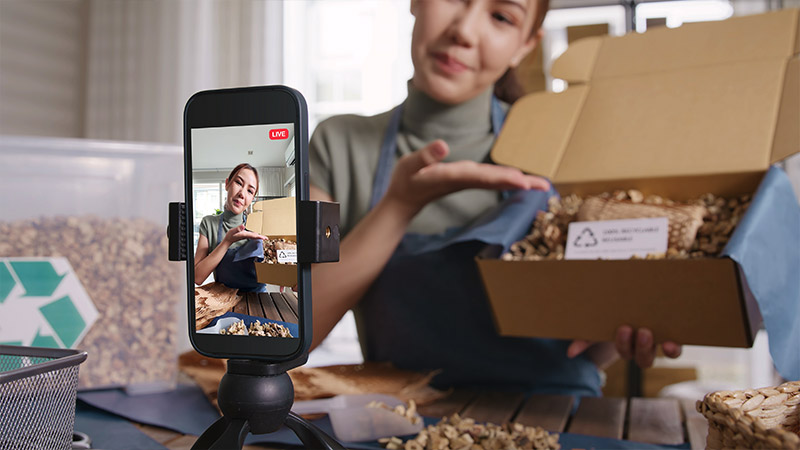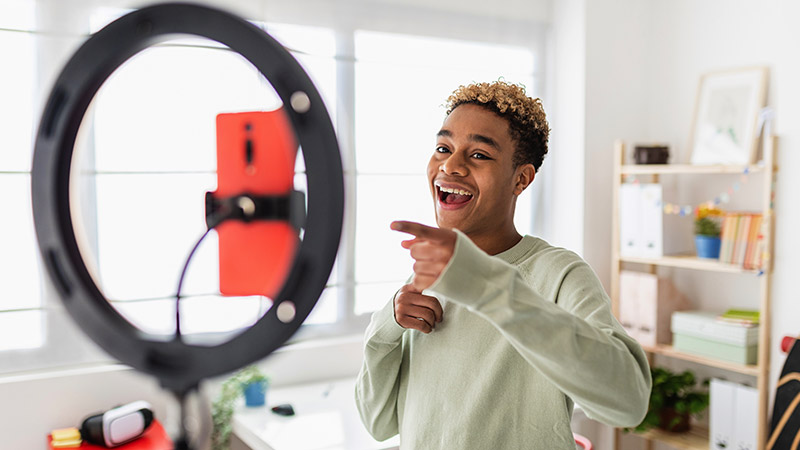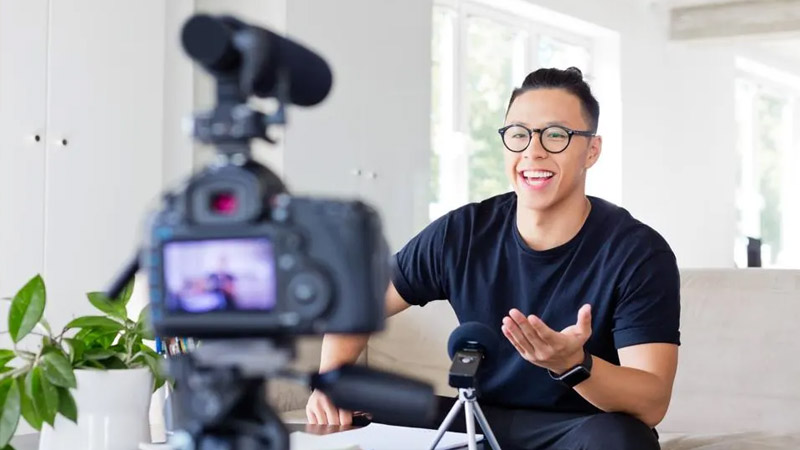Print books, a medium that was supposed to be dying, reported its best ever year as a sector in 2021. The 9% growth was driven, at least in part, by some of the digital channels that were meant to kill print off. So what’s going on, what’s ‘BookTok’ and why is this a lesson in opportunity and expansion for the influencer space in general?
There are 35.8 billion TikTok videos featuring the hashtag #booktok, according to Forbes.
BookTok has become something of a movement on the platform, with hashtag users flocking to share reactions to books they had read, particularly during the pre-vaccine, lockdown periods of Q1 and Q2 2021.
Forbes cites BookTok and other social media engagement, including influencer YouTube channels, as having fuelled the resurgence of print books. Sales were up 9% (or 67 million copies), when compared to 2020.
Whilst the trend may have been started by TikTok’s traditional Gen-Z user base, fuelling an increase in Young Adult Fiction sales, Adult Fiction has ended as the main beneficiary, with sales up 25% from 2020 in that genre.
This all seems to be running contrary to previously accepted wisdom.
Influencers only drive sales amongst the younger generations don’t they? Aren’t watching YouTube and reading physical books quite opposite pastimes? And wasn’t the advent of the Kindle meant to have destroyed print books anyway?
So, what’s going on and why does it matter for wider influencer marketing thinking?
The lines between channels are more blurred than ever
Forbes cites a fascinating example of how this marketing ecosystem fuelling print books has played out over the last 24 months.
Traditional retailers, such as Barnes & Noble in the US, have latched on to BookTok and its ability to generate interest. When BookTok gets excited about a book, B&N increases the in-store merchandising around the book in question. Sales rise. In turn, more BookTokers post about it, including users who receive revenue from TikTok, via the platform’s Creator Fund, which rewards eligible creators based on their share of overall platform views. Other channels, such as YouTube, are also involved and more traditional influencers may add to the mix with paid for engagements from the likes of… Barnes & Noble.
Which channel led to the increased numbers?
Conclusions are hard to draw without the kind of enterprise-level research and analytics engaged in by major agencies, but clearly there is some level of symbiosis at work and if the end goal is sales, driven by ‘buzz’, then the mixture is working, and at some pace. This is in line with the diversification of ‘marketing mix’ seen in other sectors, such as Fast Moving Consumer Goods (FMCG), where influencers are often deployed alongside major paid media campaigns and in-store promotion to achieve new launch and sales targets.
The crucial point for influencer marketing is that influencers fit into this mix, no matter how it is made up.
The Messy Middle at work
Over the last 6 months or so, I’ve written a lot about Google’s ‘Messy Middle’ theory, as well as speaking to plenty of agencies and influencer departments about how the messy middle impacts them.
BookTok is, in a lot of ways, the messy middle at work.
The awareness trigger for any given book may be driven by BookTok, or by another area of social media, or via in-store advertising.
The prospective purchaser then enters the ‘messy middle’ of evaluation and exploration. Put simply; do they really want to buy the book they’ve been alerted to?
In the messy middle they see other triggers that did not initially alert them to the book, but may help to convince the customer to make a purchase. Again; this could be BookTok, social media advertising, in-store physical presence or any one of many multiple routes to a customer.
The more successful those triggers are, the more information and reassurance that you can provide the customer, the more likely the customer is to purchase the product or service, rather than an alternative which enters their sphere of awareness in the meantime.
Crucially, as BookTok itself shows, the mantra for many marketers has shifted to ‘presence everywhere, conversion anywhere’, which leads me on to…
Influencers everywhere
This is a phrase we’re repeating (and hearing) plenty of at the moment.
The idea of ‘influencers everywhere’ captures the fact that influencers are almost universally applicable, in any given marketing engagement and for any given product.
Someone, somewhere, likes a product or service and has an audience of a sizeable enough number that they can increase sales in said service or product by posting about it.
Allowing influencers to come up with an original response, or even leading on a creative assignment, to a brief which fits into a campaign primarily taking place through another channel can be a relatively easy way to integrate influencers into your marketing. All of the evidence points to the fact that doing so means that KPIs and ROI on that marketing campaign are likely to increase.
This is leading to a developing mindset within some agencies around the importance of ‘influencers everywhere’.
Whatever your campaign, wherever and however it primarily exists or comes into being, influencers can help to amplify it.
BookTokers are but one example of this tangibly happening in practice.
Audience diversification, rather than audience migration
The change in the aforementioned accepted wisdom around Kindles killing books and TikTok being a young person’s platform is better described as diversifying rather than switching.
Audiences appear more willing to engage with unfamiliar platforms and mix their choice of media, rather than abandon one for the other.
It’s not Kindles or books; it’s both. It’s not choosing reading material based on influencers or in-store recommendations; it’s both.
This has wide-reaching implications for traditional marketing approaches, based on those accepted wisdoms.
Suddenly TikTok advertising might be an acceptable route to reaching 40-somethings, digital media spend could increase sales by 25% of a traditional item or, importantly to those of us in influencer marketing, our channel could reach more people and more demographics than perhaps was considered practical at the inception of the sector.
Growth and opportunity in unexpected places
It’s impossible to prove, but my suspicion is that if you had pitched BookTok back in 2020, as part of a project to increase Adult Fiction sales by 25% in a calendar year, you would have been laughed out of the comfortably-appointed pitching room.
But now the metrics are in and the learning seems clear and for the influencer sector in general it shows that the growth of recent years is far from over.
Influencer marketing as a whole – paired with organic social movements and integrated campaigns – has plenty of new (or should that be old) areas to move into.
As a segment, spending on influencers is far, far outpaced by spend on Facebook as one single PPC channel, for example.
I wonder if that will still be the case in five years time.



